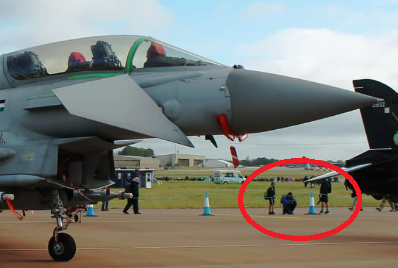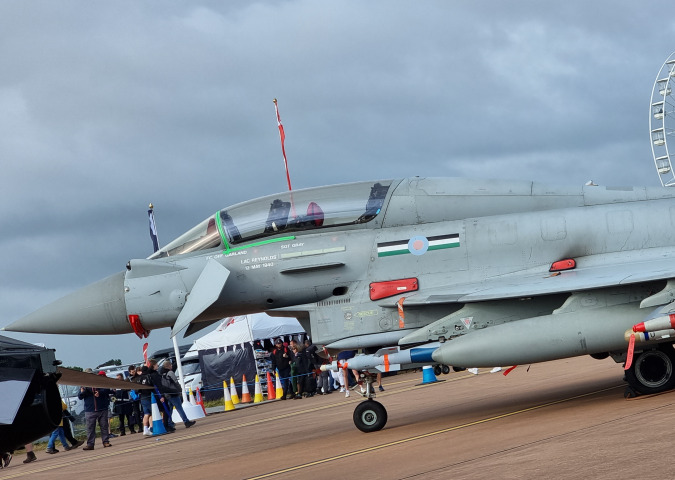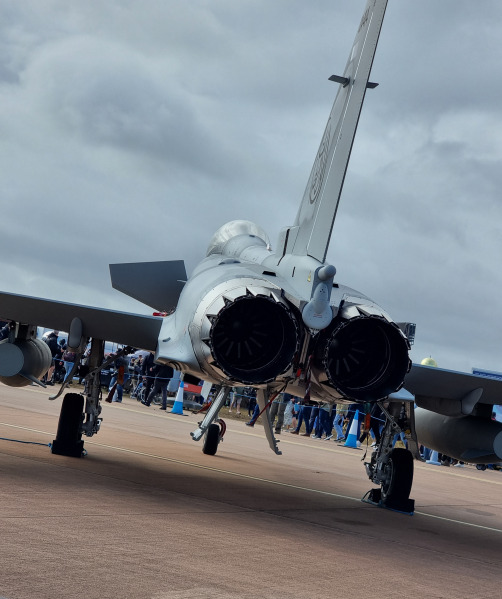- Yes
- No
Introduction
The Eurofighter Typhoon’s development began in the early 1980s as a multinational collaboration to create a highly agile, multi-role fighter to replace aging fleets in European air forces. Initially known as the European Fighter Aircraft (EFA) program, it was spearheaded by the UK, Germany, Italy, and Spain, with France also being involved initially, but soon diverging into a development that lead to the Rafale. The project faced numerous delays due to technical challenges and political disagreements, particularly over cost-sharing and work distribution among partner nations.
The aircraft’s first prototype, the DA1, flew on 27th March, 1994, marking a major milestone. Official production began in the late 1990s under a consortium led by Airbus, BAE Systems, and Leonardo. The final design consisted of a delta-wing and canard configuration for superior maneuverability and rapid time-to-altitude, coupled with advanced avionics and weapons systems.
The Eurofighter Typhoon entered British service with the Royal Air Force (RAF) in 2003, following the acceptance of the first operational aircraft. The RAF initially introduced the Typhoon in an air-defense role to replace the aging Tornado F3s. By the late 2000s, it was upgraded to perform multi-role operations, including precision ground-attack missions. The Typhoon was deployed in its first combat operation during the 2011 Libyan Civil War, where RAF Typhoons enforced a no-fly zone and conducted strike missions. The aircraft has since become a cornerstone of the RAF’s capabilities, with upgrades ensuring its relevance in modern warfare.
The variant discussed here is the T.3, a two seater variant developed from the preceding T.1 two-seater in 2007. This development represents a similar developmental leap as seen between the F.2 and FGR.4 variants - the implementation of the PIRATE sensor suite, allowing the mounting of laser guided bombs (LGBs), Paveway IIs. Following this, as a result of Project Centurion, Brimstones and Storm shadows were integrated with T.3s in the mid-2010s, as well as the Meteor BVRAAM. The Typhoon T.3 represents the most advanced two-seater aircraft ever in service with the RAF.
Specifications
Spoiler
Armament:
• 1 x BK27 Mauser Cannon (150rpg)
• 2-6 x ASRAAM
• 4-6 x Meteor/AMRAAM
• 6-8 x Paveway LGBs
• 12 x Brimstone
• 12 x Spear 3
• 3 x Storm Shadow
• 2 x ALARM
• Litening Targetting Pod
Airframe:
• Crew: 2
• Length: 15.96 m (52 ft 4 in)
• Wingspan: 10.95 m (35 ft 11 in)
• Height: 5.28 m (17 ft 4 in)
• Wing area: 51.2 m2 (551 sq ft)
• Empty weight: 11,000 kg (24,251 lb)
• Gross weight: 16,000 kg (35,274 lb)
• Max takeoff weight: 23,500 kg (51,809 lb)
• Fuel capacity: 4,996 kg (11,010 lb) / 6,215 L (1,642 US gal; 1,367 imp gal) internal
• Powerplant: 2 × Eurojet EJ200 afterburning turbofan engines, 60 kN (13,000 lbf) thrust each dry, 90 kN (20,000 lbf) with afterburner
• Maximum speed: Mach 2.0+ (2,495 km/h) - 1,530 km/h (950 mph; 830 kn) / Mach 1.25 at sea level
• Supercruise: Mach 1.5
• Range: 2,900 km (1,800 mi, 1,600 nmi)
• Combat range: up to 1,389 km with 3 × external 1,000 l tanks
• Ferry range: 3,790 km (2,350 mi, 2,050 nmi) with 3 × drop tanks
• Service ceiling: 19,812 m (65,000 ft)
• G limits: +9 / -3
• Rate of climb: 315 m/s (62,000 ft/min) - 150 m/s average to 9000m(30,000ft)
• Acceleration: Mach 0.3 → Mach 1 in 30s.
• Wing loading: 312 kg/m2 (64 lb/sq ft)
• Thrust/weight: 1.15 (interceptor configuration)
Images
Sources









